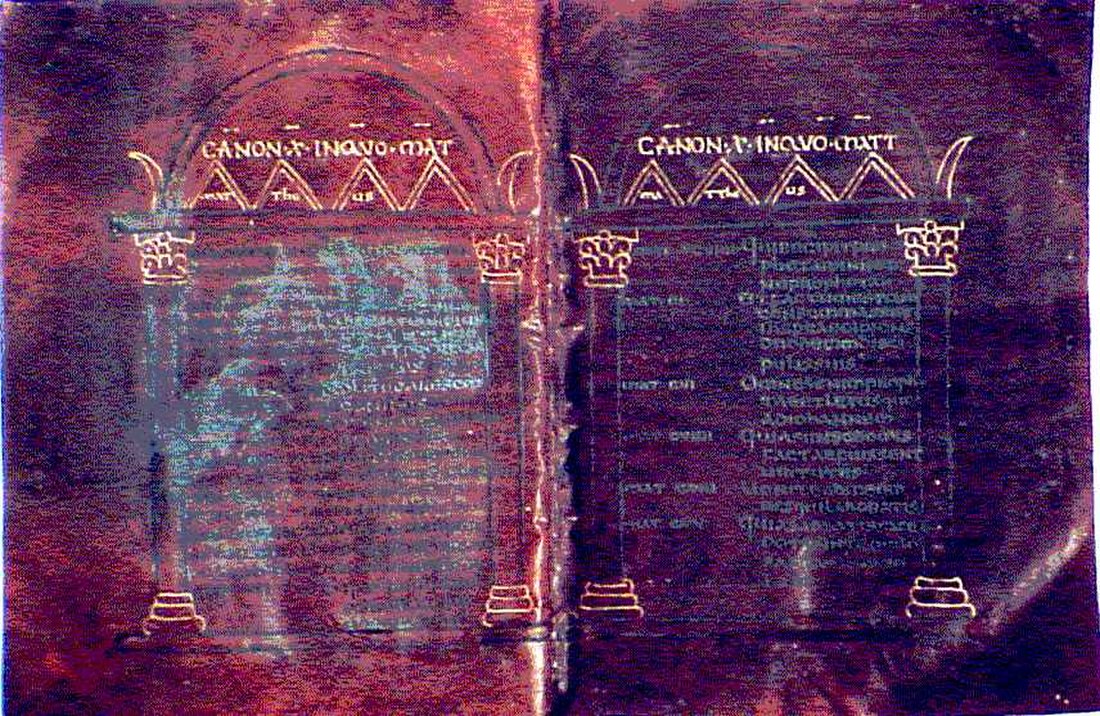Top Qs
Timeline
Chat
Perspective
Codex Brixianus
6th-century Latin Gospel Book From Wikipedia, the free encyclopedia
Remove ads
The Codex Brixianus is Latin Gospel Book. It is designated by the siglum f or VL10 in the Beuron numbering of Vetus Latina manuscripts.[1]: 216 The codex was probably produced in Ravenna, Italy.[1]: 216 Using the study of comparative writing styles (palaeography), it has been assigned to the 6th century.[1]: 216 It is currently housed at the Queriniana Public Library (Biblioteca Civica Queriniana) in Brescia, Italy.

Remove ads
Description
The manuscript is a codex (precursor to the modern book format) containing the text of the four Gospels written on 419 parchment folios.[1]: 216 The Gospels are in the "Western" order of Matthew, John, Luke, Mark.[2]: 132 It was named Brixianus after Brescia, where it is housed. The text is written in silver and gold ink on vellum which has been dyed purple.[2]: 131 [1] The text is written in single columns, 20 lines per page,[1]: 216 with Eusebian section numbers (an early division of the Gospels into referenceable sections) written in the left margin.[1]
It is a version of the Latin Vulgate translation of the Gospels with many old Latin readings, which seem to be connected with the Gothic translation of Ulfilas.[2]: 131 [1] At the base of each page is an artistic colonnade, very similar to that found in Codex Argenteus.[1] Furthermore, the Latin text shows readings which seem to be influenced by the Gothic Bible translation.[1]
There is a preface before the Gospels which discusses the difficulties of translation, with a specific comparison between Greek, Latin, and Gothic.[1] In this preface there appears to be a criticism of Jerome and his translation of the Gospels.[1]
Remove ads
Text
It has some gaps (Matthew 8:16–26; Mark 12:5–13:32; 14:53–62; 14:70–16:20).[3][4][1]: 216 In Luke 7:31, it contains the phrase "tunc ergo iesus dixit" (Then therefore Jesus said).[5]
In John 11:41, alone of all the Old Latin Gospels, it had in the original hand the truncated reading "ubi fuerat" (where He was), a translation of the Greek ου ην, a reading found in the manuscripts Codex Alexandrinus (A), Codex Cyprius (K), Codex Guelferbytanus A (P), Uncial 0211, 0250, Family ƒ1, minuscule 22, 579, and some others. This matches the Gothic reading "þarei was."
Remove ads
History
The earliest history of the manuscript is unknown.[1]: 216 It was copied somewhere in North Italy, with most scholars pointing to Ravenna as the most likely location.[1]: 216 It is currently housed in the Queriniana Public Library (shelf number Evangelario purpureo) in Brescia.[1]: 216
See also
References
Further reading
Wikiwand - on
Seamless Wikipedia browsing. On steroids.
Remove ads
